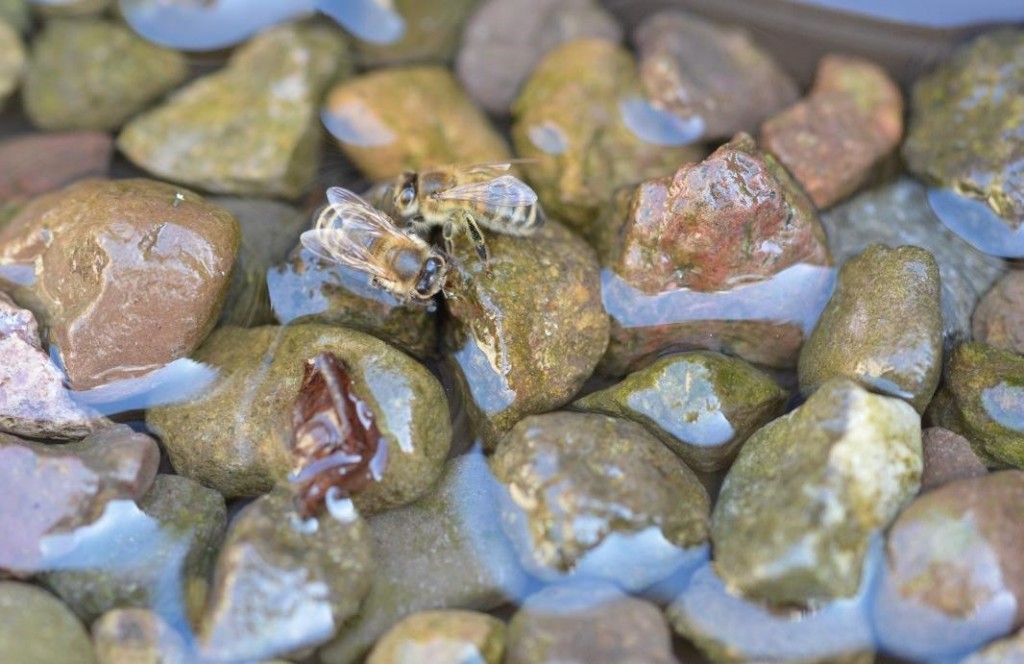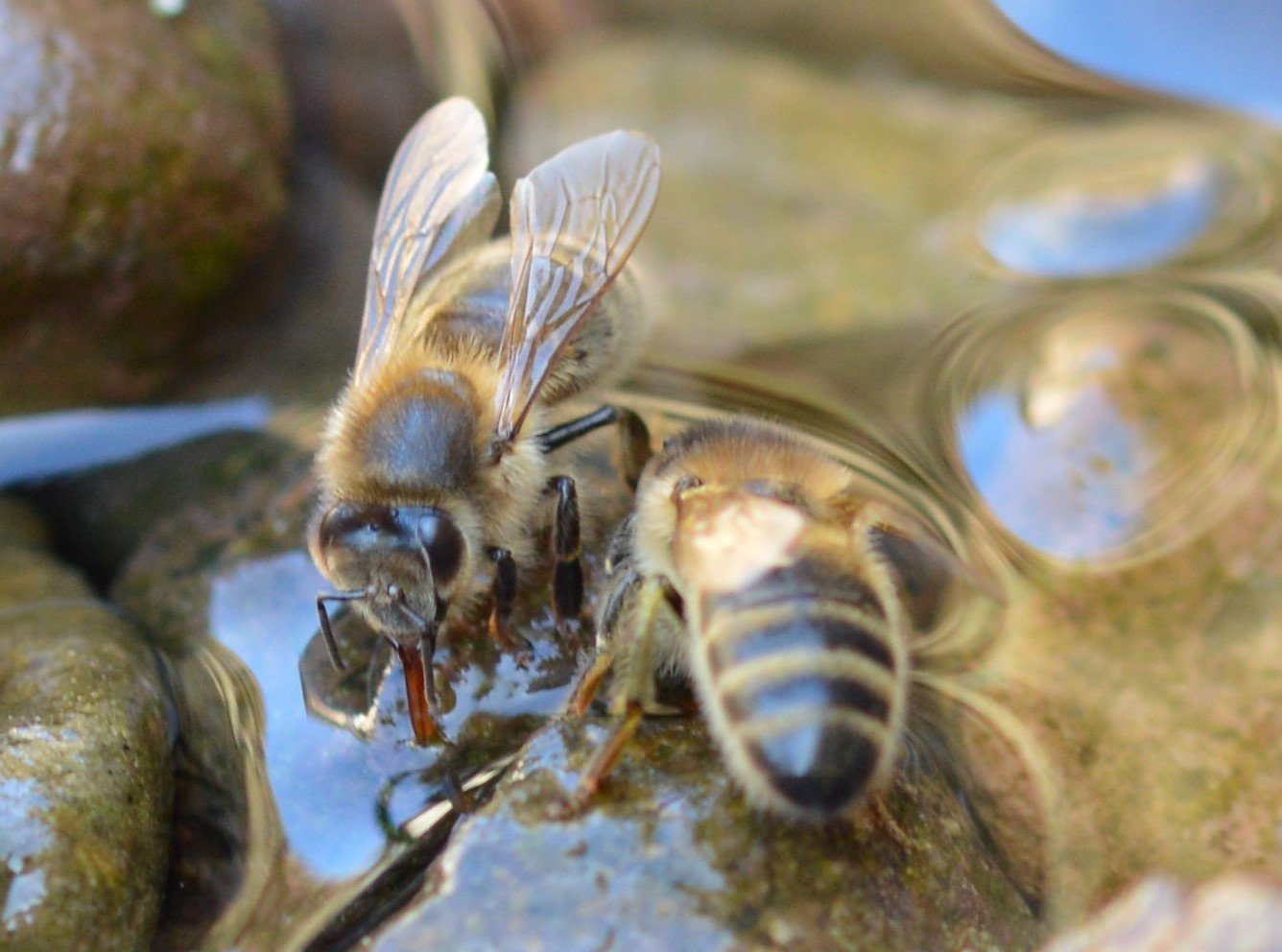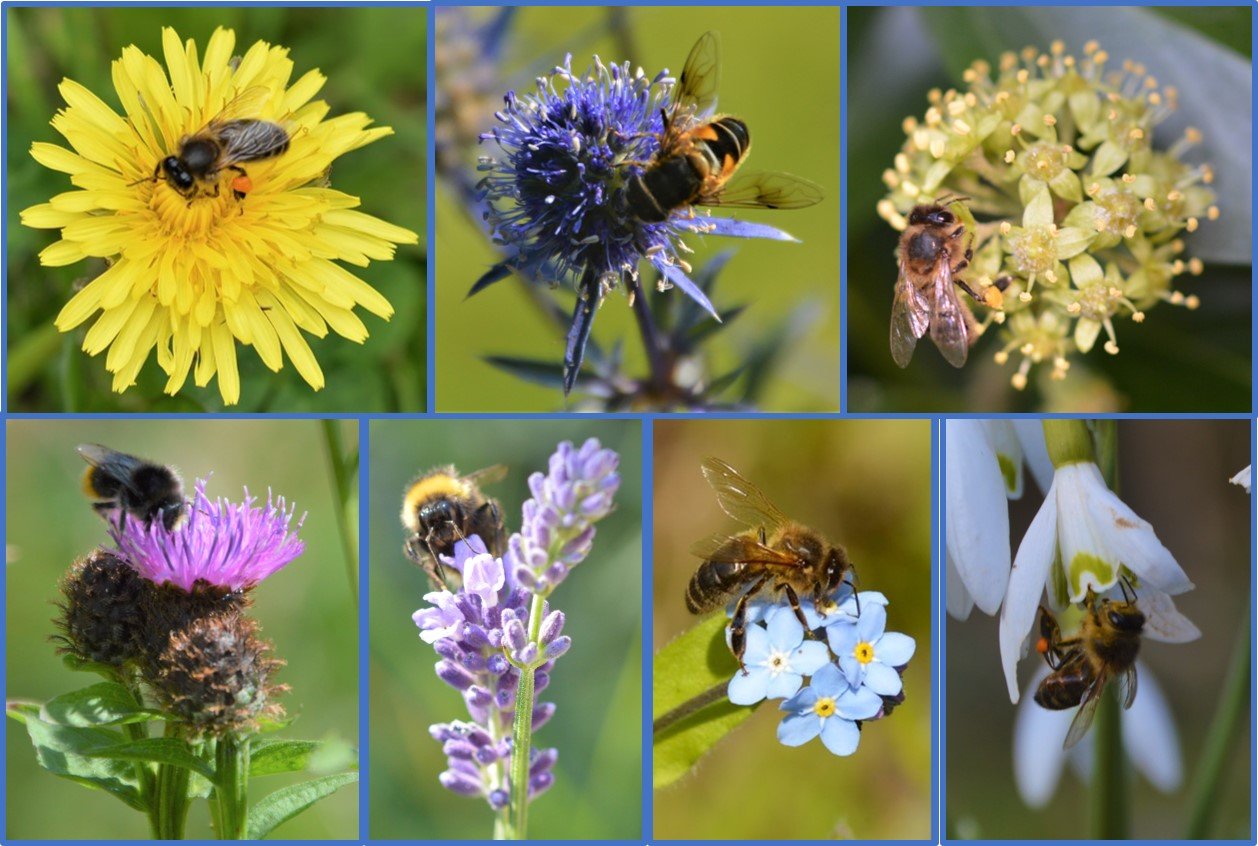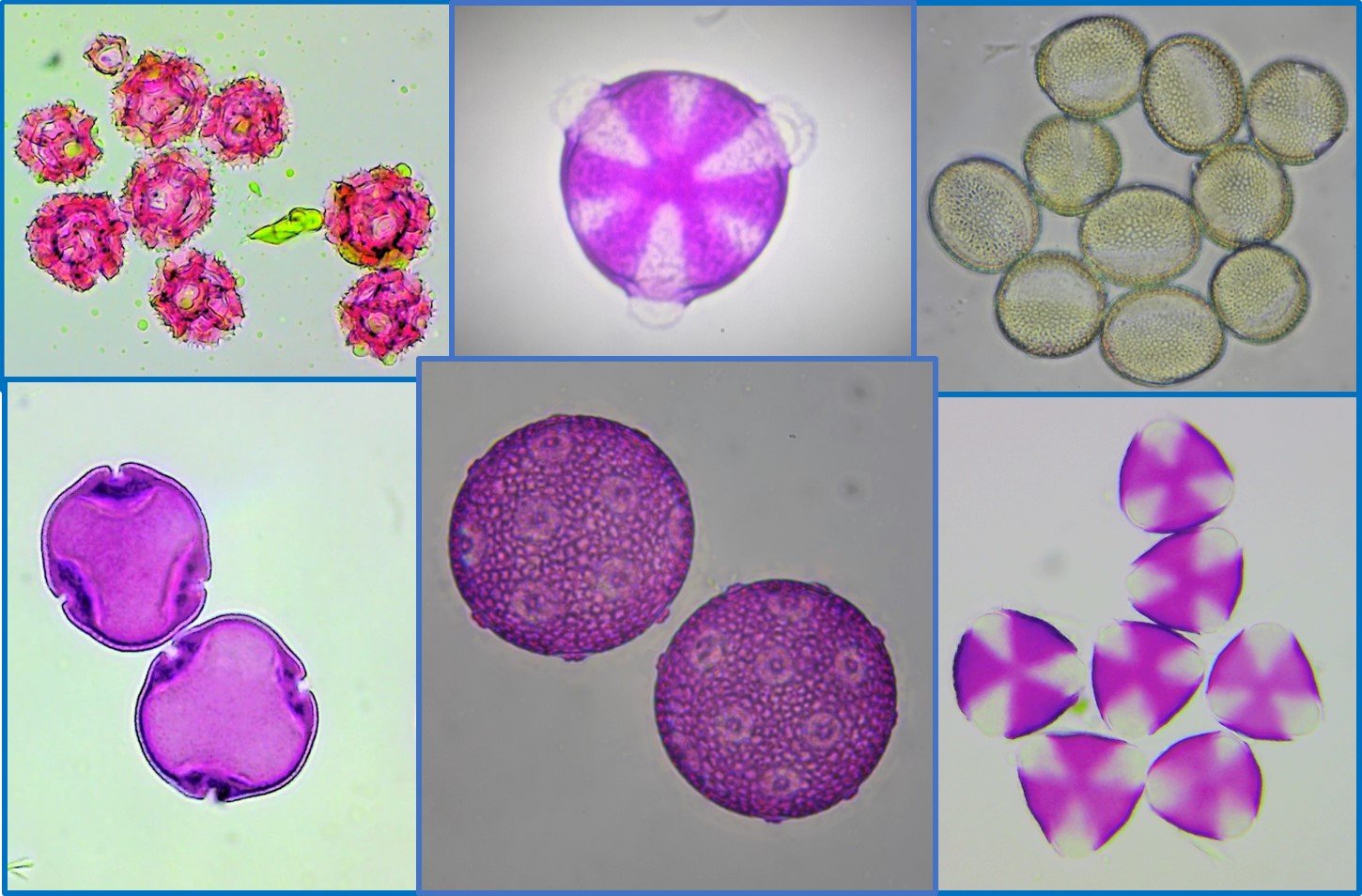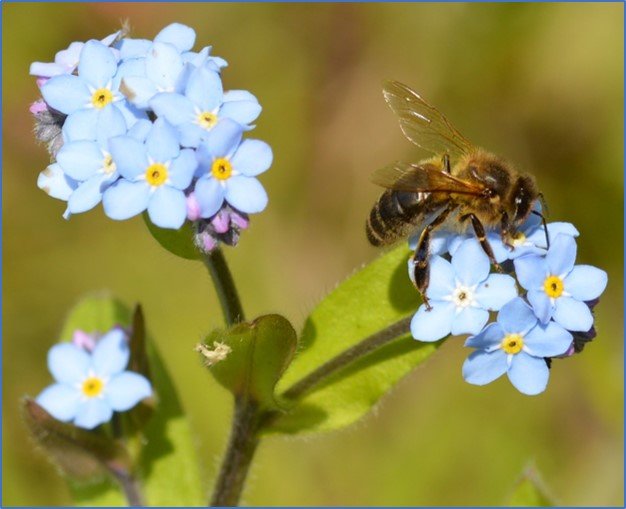Why do honey bees forage for water?
There are three main reasons why honey bees forage for water.
- Dilution of concentrated honey, so they can digest it
- Maintaining temperature and humidity in the brood nest
- Mixing with saliva to clean brood cells
During the last spell of warm weather we saw honey bees making regular trips to a small pool, filled with pebbles, in our garden. While most of the rest of the foragers were going for glory, bringing in pollen baskets full of white, yellow and orange pollen, a few steadily worked this little pool for most of the day.
It was fascinating to watch them hover above the pool, spot a place to land, then drop onto a pebble. They then extended their proboscis and sucked up the liquid, taking about 20-30 seconds per trip.
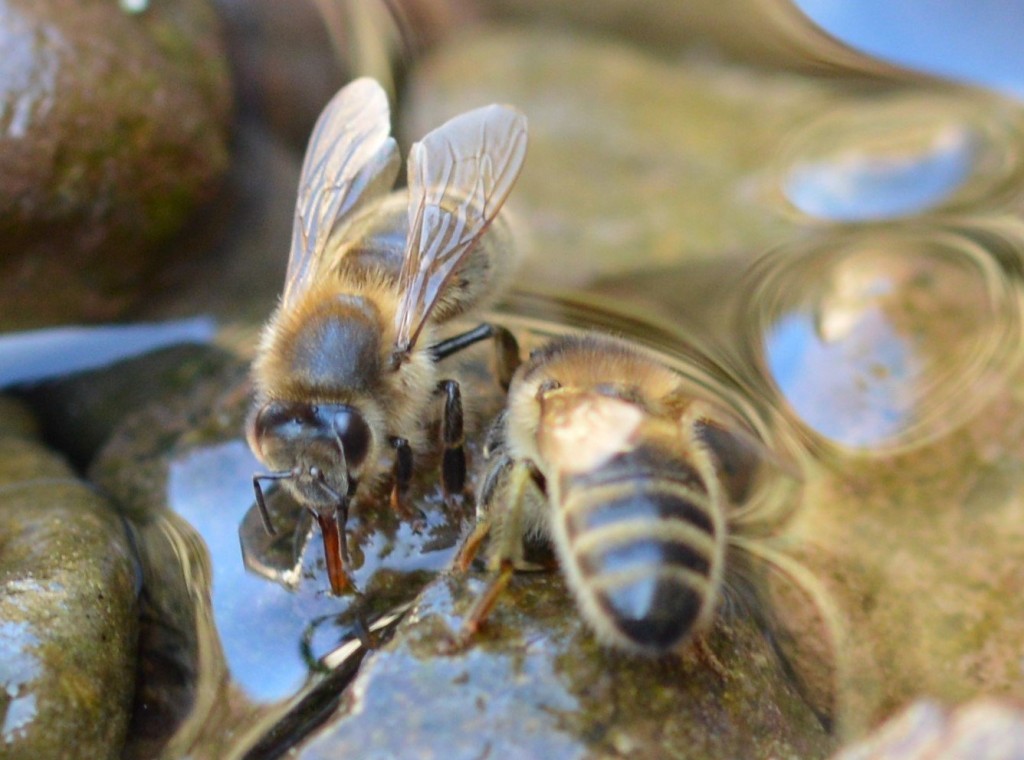
The equipment I used for this photo was a Sigma 105mm macro lens fitted to a Nikon D3200 camera.
How do honey bees use water for digesting honey?
Honey bees need to keep the concentration of sugars to about 50% in their stomach to enable digestion to take place. Nectar can vary in concentration from under 30% sugars, up to over 70%. When nectar is collected, the forager mixes it with enzymes. These break down the complex sugar in the form of sucrose, into the more digestible simple sugars of glucose and fructose.
When the nectar is being turned into honey for storage, the water needs to be evaporated off. The worker bees in the hive will get it down below 20%. This ensures that the honey will keep over the winter. At these times there is an excess of water in the hive and the workers will work hard to ventilate the hive and stop condensation and damp in the hive.
In the spring water is needed to dilute the honey back down to a concentration that it can be digested. So the foragers will need to collect nearly as much water as the honey the want to dilute. Fondant can be over 98% sugar, so they need even more to be able to dilute it.
How do honey bees use water to regulate temperature and humidity?
Water is used in the hive to reduce temperature and increase humidity. When the temperature of the brood nest is too high the bees will first attempt to cool the hive by fanning, to circulate the air. When this is not enough, water is smeared on the surface of cells and fanned. The effect of the evaporation is to take heat from the surrounding air, which creates the cooling effect. Just the same way your domestic fridge works!
Tom Seeley describes this process in his book Honeybee Ecology.
Which honey bees collect the water?
There is some debate about water collection being done by specialist bees, which devote themselves to water foraging and sharing within the hive, or if all workers may adopt this role if they sense it as a priority but will move on to other roles when they no longer sense a need for it.
I find Tom Seeley’s description of the way that individual bees respond to needs within the hive and their “decay of interest” in tasks, very convincing, in his book “Wisdom of the hive“.
Summary
Honey bees need water to digest food and maintain temperature in the brood nest. When they are living on stores of honey and fondant they need large quantities of it to dilute them to a concentration they can digest. You can help your bees by making sure they have a water source close by. They can’t land on the water to feed, so need a ramp, stones or a sponge to stand on while they drink.
If you have found this interesting or helpful, please subscribe to my blog, comment on the post, or like/share on Facebook.
